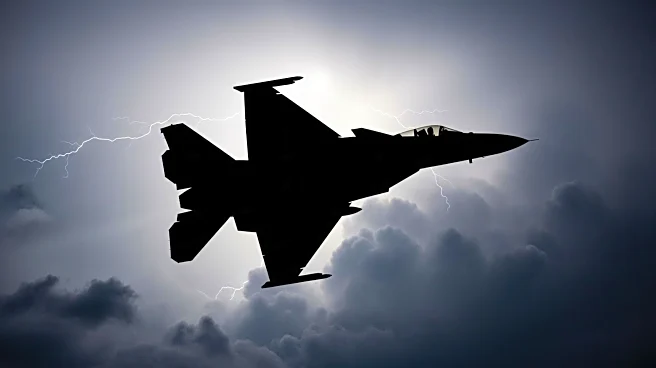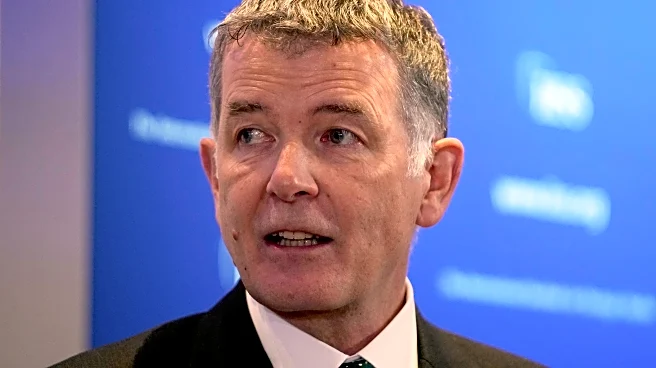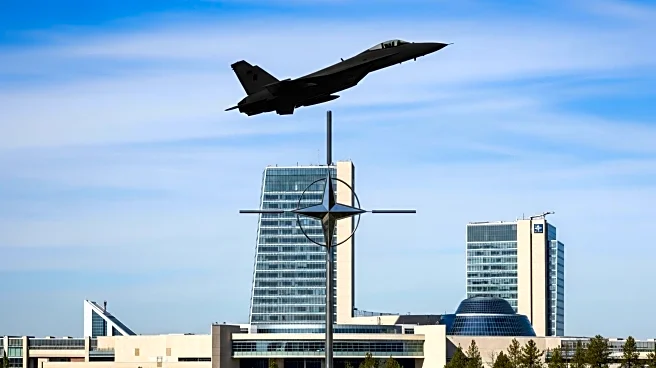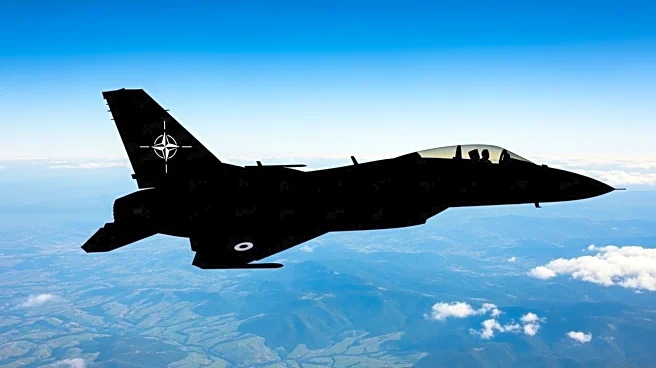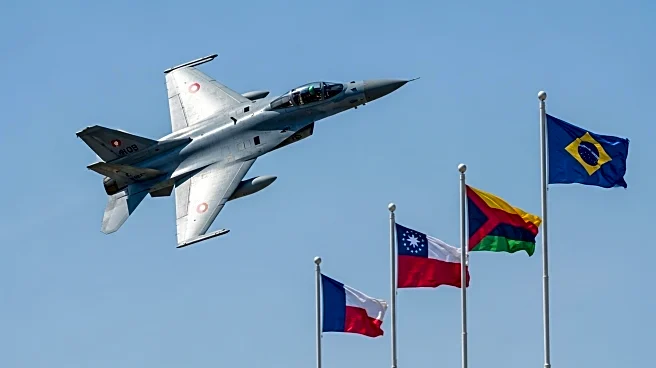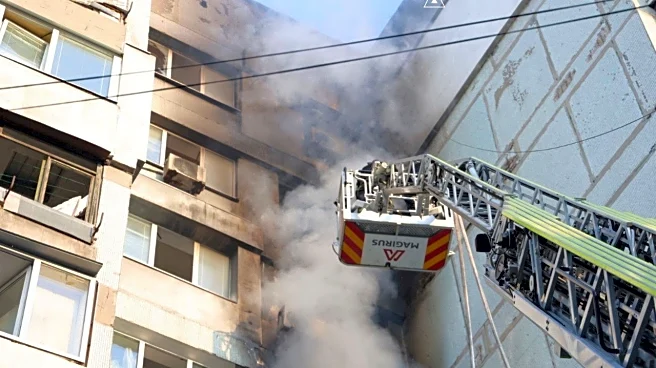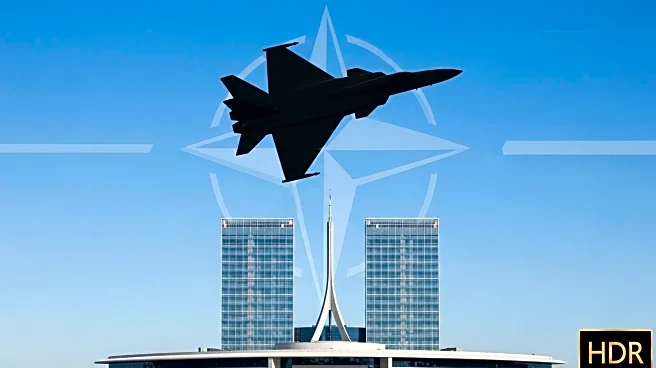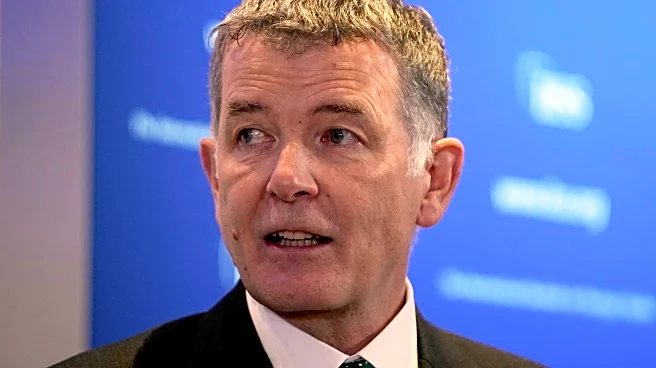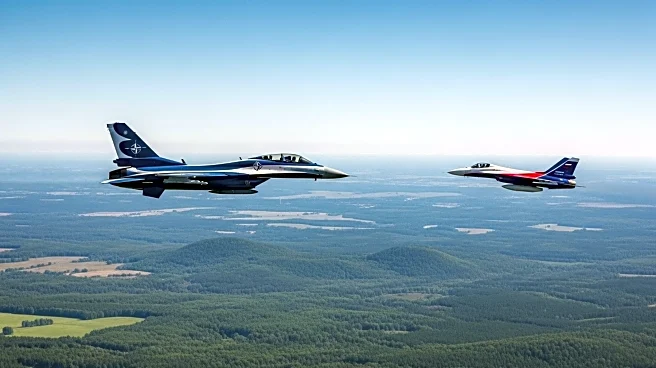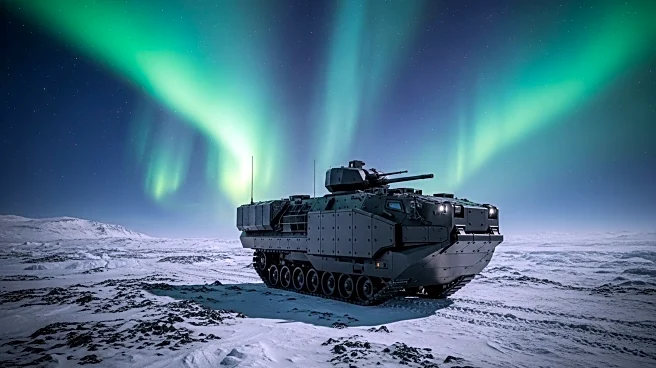What's Happening?
Estonia has summoned a Russian diplomat to protest the unauthorized entry of three Russian fighter jets into its airspace. The incident occurred near Vaindloo Island in the Gulf of Finland, with the aircraft remaining in Estonian airspace for 12 minutes. The Estonian Foreign Ministry described the incursion as 'unprecedentedly brazen,' marking the fourth violation of Estonian airspace by Russia this year. The aircraft did not have flight plans, their transponders were turned off, and they were not in communication with Estonian air traffic services. Italian F-35 fighter jets, part of NATO's Baltic Air Policing Mission, responded to the incident. This event follows recent tensions, including NATO planes downing Russian drones over Poland, raising concerns about the potential spillover of the Ukraine conflict into NATO territories.
Why It's Important?
The incursion underscores the heightened tensions between Russia and NATO countries, particularly in the context of the ongoing conflict in Ukraine. Such violations of airspace can escalate diplomatic and military tensions, potentially leading to broader confrontations. Estonia's response, including summoning the Russian charge d'affaires, reflects the seriousness with which NATO members view these actions. The incident also highlights the strategic importance of the Baltic region and the role of NATO's air policing missions in maintaining security. The broader implications include increased pressure on Russia to adhere to international norms and the potential for further diplomatic and economic measures by NATO countries.
What's Next?
Estonia and other NATO members may increase diplomatic and military readiness in response to such incursions. There could be calls for enhanced air defense systems and more robust NATO presence in the region. The incident may also lead to discussions within NATO about further sanctions or diplomatic actions against Russia. Additionally, Estonia and its allies might seek to strengthen their intelligence and surveillance capabilities to prevent future violations. The ongoing situation in Ukraine will continue to influence NATO's strategic decisions and its approach to Russian aggression.
Beyond the Headlines
The incursion raises questions about Russia's broader strategic intentions and its willingness to test NATO's resolve. It also highlights the challenges of maintaining peace and security in regions adjacent to conflict zones. The incident may prompt discussions about the effectiveness of current international diplomatic frameworks in addressing such violations. Furthermore, it could lead to increased public and political pressure on NATO governments to take decisive action against perceived Russian aggression.

